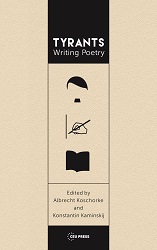
The Monster outside and the one within: the departure from the Tolkienesque concept of monstrosity in the books of G.R.R. Martin
There is no doubt about the impact of the works of J.R.R. Tolkien on the fantasy genre, and since G.R.R. Martin is often referred to as the new – or American – Tolkien, comparative studies are practically inevitable. Both authors created great epics set firmly within their own secondary worlds. Tolkien famously proclaimed that he was creating a mythology for England, while Martin affirms his strong inspirations in historical fiction and history in general. Both Arda and Westeros are set in a pseudomedieval fantasy universe, inhabited by various creatures and monsters. Yet, are those monsters the same? For Tolkien, The Fellowship of the Ring is essentially only one small tale in a wider, more relevant story of the world as a whole. As such, not only the characters or the protagonists, but also the monsters are all merely a small part of a larger picture; they are products of the ever changing wheel of time. In contrast, Martin’s Westeros feels like a mere backdrop for the real stories: the intimate affairs of the numerous complex characters. The monsters, therefore, are also more personal, internal, and harder to find and distinguish from the heroes.
More...







